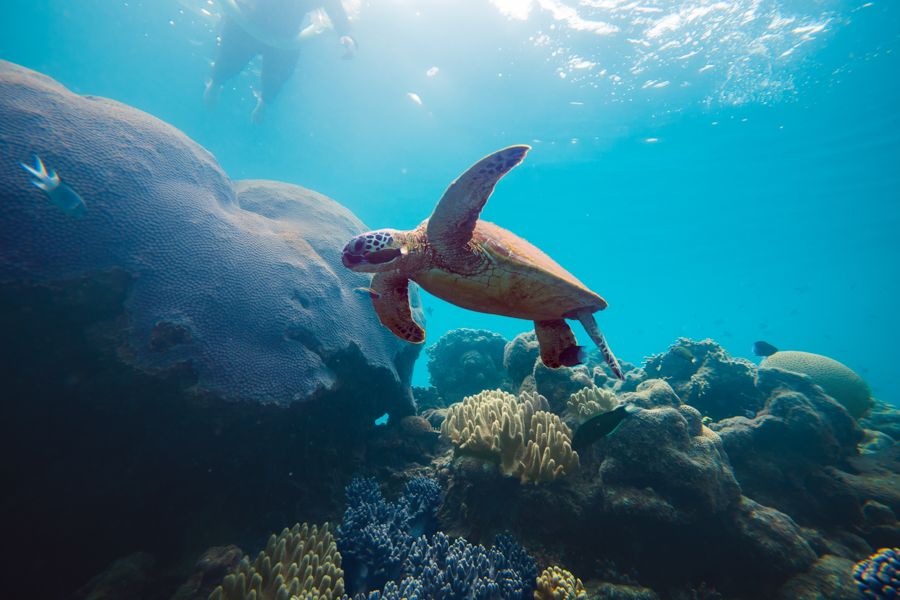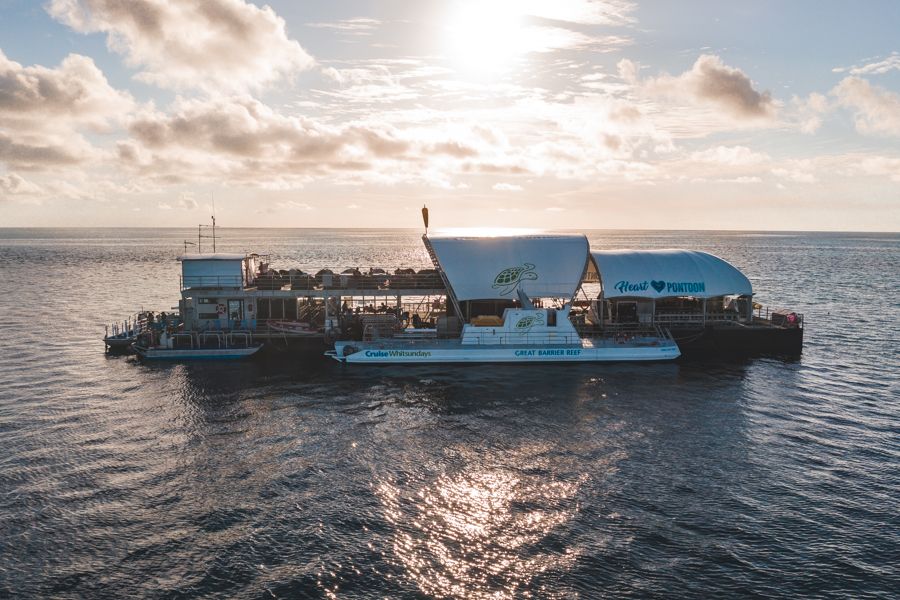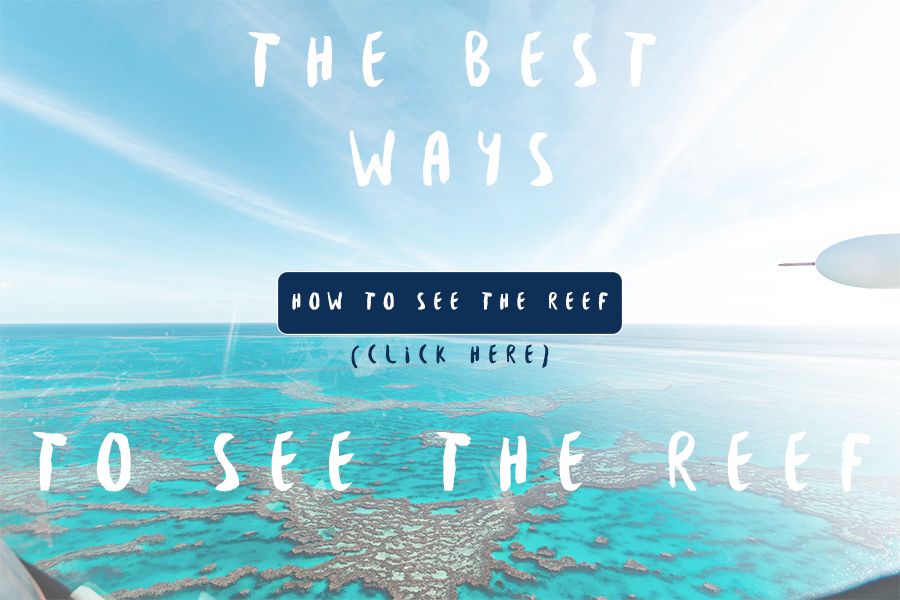How The Great Barrier Reef Was Formed
The Great Barrier Reef has formed thanks to millions of years of coral growth combined with a flood on a coastal plain around 20,000 years ago. There are numerous factors at play and the actual age of the reef is up for debate. Regardless, the Great Barrier Reef is the largest living ecosystem in the world! It has been around for many years and is continually growing and changing. It is a network that spans across 2,600km and is made up of corals, seagrass, islands, and cays that make up the Great Barrier Reef Marine Park.

When was the Great Barrier Reef formed?
It is said that the reef dates back as much as twenty million years ago, with an ever-changing landscape and coastline. It has moved and morphed over the years and was first encountered by humans 40,000 years ago when Aboriginal and Torres Strait Islander peoples settled in the area. The current reef is about 6,000 to 8,000 years old and was formed after the last ice age began to recede and water levels and temperatures rapidly changed.

The Formation Of The Great Barrier Reef
The Great Barrier Reef that we know today actually sits on what is the remains of the sediments of the Great Dividing Range, a huge mountain system. Corals began to form around the base of these mountains, which at the time were continental islands. Once sea levels began to rise, the growth of coral began to creep up the mountains, which were eventually completely submerged, leaving behind small islands, barrier reefs and atolls that we know and see today. The Whitsunday Islands, for example, are the remains of mountain tops that once towered over the region which

Coral Reef Formation Process
All reefs, including the Great Barrier Reef, begin to form with a single organism. A drifting coral polyp, expelled into the open sea by its parents, will come to rest on a stationary object, such as a rock or shell, where it will permanently attach itself to live its life. Here is where we see the humble beginnings of a reef.
After they settle, polyps will begin to secrete a calcium carbonate, which hardens to form the bony white structure, or skeleton, that forms the shape of the coral itself. The polyp lives on the outside of this bony structure, where more of the same species will join it, becoming one organism. The polyps develop a relationship with algae, which is its source of food and its colour, which gives the coral its look. The healthy coral will continue to grow at a rate of about 5mm - 20cm per year, depending on the species, and grow best in temperatures between 21C and 29C.

Competition On The Great Barrier Reef
The coral reef ecosystem on the Great Barrier Reef is a vibrant, unique interplay of organisms. Other types of corals will settle in the same area, expanding and fighting for space and resources, until you eventually have a fully developed coral reef. Hard and soft corals are formed in similar ways and will eventually form on older, dead corals, always expanding and growing, changing the shape of the reef.
Other marine plants and fish will begin to move into the same area, using the corals for food, protection or mating grounds, creating an ever-fluxing ecosystem. A coral reef can be likened to a towering forest that began from a single seedling - once just a small single plant, it can become a diverse and vast ecosystem.
The Great Barrier Reef is currently home to 1,500 species of fish, six species of sea turtles, 30 species of whales and dolphins and 411 species of hard coral. It is constantly changing before our eyes and is an ever-growing system. As visitors to the reef, you mustn't touch or interfere with corals and marine species on the reef, so they continue their natural life cycle and allow the reef to continue to be healthy and thriving.
Tours to the Great Barrier Reef in the Whitsundays
Travellers are lucky to be able to visit the Great Barrier Reef from Airlie Beach and Hamilton Island in the Whitsundays! There is a huge variety of day tours, overnight boats, and scenic flights that can bring you out to the islands and the Outer Reef. You can snorkel, scuba dive, or fly over the Great Barrier Reef and gain a unique point of view on the local corals, marine life, and natural beauty!
Check out our top Great Barrier Reef tours from the Whitsundays!
Day Tours To The Great Barrier Reef
Day boat tours are one of the most affordable and convenient ways to visit the Great Barrier Reef in the Whitsundays. Some day tours prioritise Hill Inlet and Whitehaven Beach and usually provide one or two snorkel locations in the fringing reefs around Whitsunday Island, Hook Island, or Haslewood Island. Whitsunday Bullet and Ocean Rafting are popular examples of island day tours that include snorkelling!
Other day tours bring you to the Outer Reef! You'll visit an Outer Reef Pontoon where you can spend the day snorkelling or scuba diving in the giant, hard corals of the fantastic Great Barrier Reef. Explore and Cruise Whitsundays offer the best outer reef tours from Airlie Beach and Hamilton Island.

Overnight Tours To The Great Barrier Reef
If you want a longer, more adventurous experience out on the reef, there are a few epic overnight tours you can book in the Whitsundays! Similar to the day tours, there are options that prioritise island exploration and allow for snorkelling in the fringing reefs, and there are also Outer Reef Tours.
Maxi yachts and catamarans offer popular, fun overnight trips through the islands where you'll have a few snorkelling opportunities. Some amazing sailing tours bring you to the Outer Reef, such as Kiana and Summer Jo. Or if you're just looking for an Outer Reef experience, you can book Reefsleep or Reefsuites and spend the night on a majestic pontoon overnight!

Scenic Flights To The Great Barrier Reef
The Whitsundays are also an amazing place to book scenic flights over the Great Barrier Reef! You can see the reef from an entirely new perspective as you fly above it. Take in the natural wonders such as Heart Reef and even have the chance to land on Whitehaven Beach. The tour guides are insightful, friendly and keen to show you the region from the sky. Choose from a range of both helicopter tours and seaplane tours which will ultimately maximise your time in the stunning Whitsundays.














